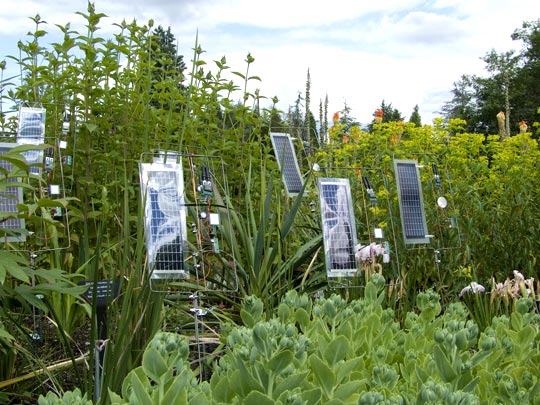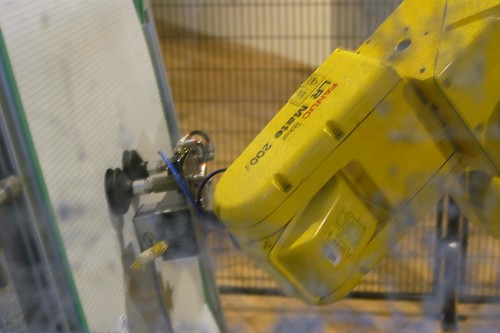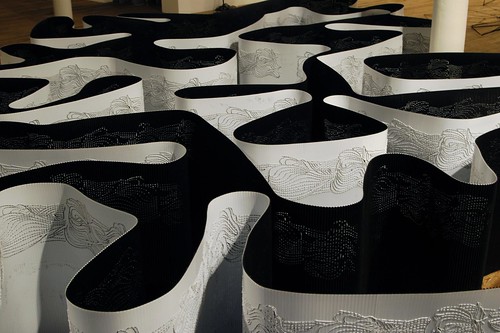
“Designed by public art team Harries/Heder, the installation consists of 15 flower-like solar photovoltaic panels located on a pedestrian and bike path between the village of Mueller and Austin’s highway I-35.”
via Inhabitat

“It’s called the GreenPix Zero Energy Media Wall, and with 2,292 individual color LEDs, comparable to a 24,000 sq. ft. monitor screen, it’s said to be the largest color LED display in the world. The wall is solar-powered too — photovoltaics are integrated into the wall’s glass curtain, and it harvests power during the day, to illuminate the display at night.”
via Metaefficient

Solar Collector by Gorbet Design
“In a collaboration between the community and the sun, Solar Collector gathers human expression and solar energy during the day, then brings them together each night in a performance of flowing light patterns.”

Ken Gregory’s Sun Sucker: Solaris consumis
“Sun Suckers are machines. They are classified in the order Real Artificial Life. Sun Suckers have stout flat bodies. The skin is a large photovoltaic cell and usually shiny although in a few species they are dull and opaque. Sun Suckers have one large compound eye (photoresistor) situated on the top of the body. This large eye can read how bright the sun is during the day and detect when night falls. Beside the eye is a thick whisker. This sensor (thermistor) measures the ambient temperature in close proximity of the Sun Sucker.”
via Parks & Wildlife

Pascal Glissmann & Martina Hoefflin, Elf
“elfs are small, analog creatures reacting to light, calling the attention of the observer with their delicate sounds and movements.”
via

Bjoern Schuelke, solar-kinetic object

“The Pearl Avenue Branch Library in San Jose, Calif., features a public art display that combines photovoltaic cells and art glass in an architectural application. Artist Lynn Goodpasture collaborated with Peters Glass Studios in Portland, Ore., in the creation of Solar Illumination I: Evolution of Language, an artwork that incorporates four art glass windows in the building’s southwest corner that convert sunlight to 24-Vdc electricity.”
via Solar Glazing









